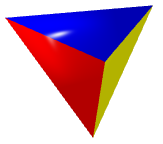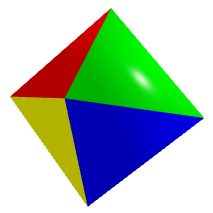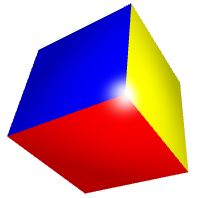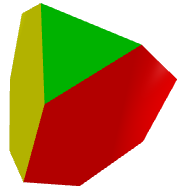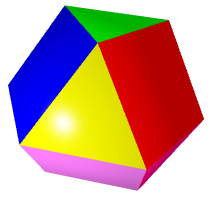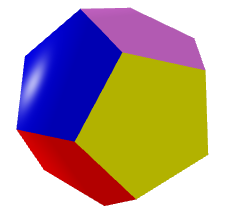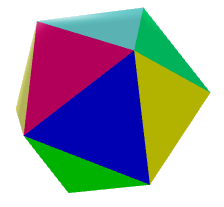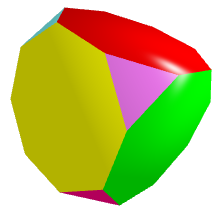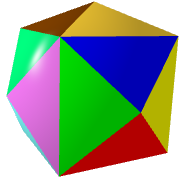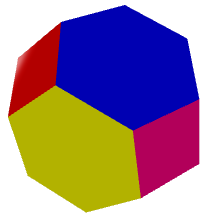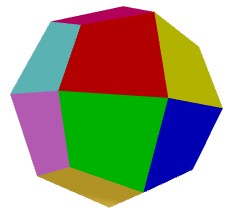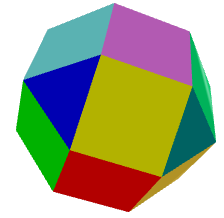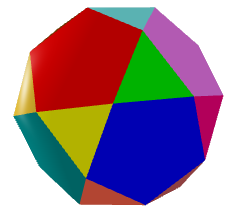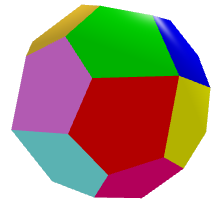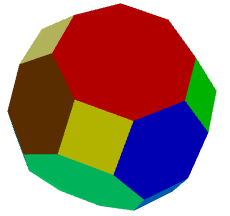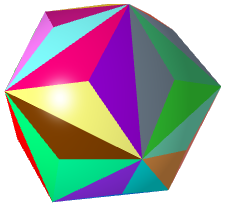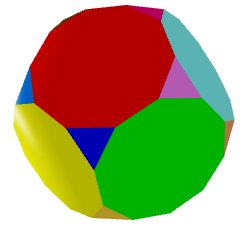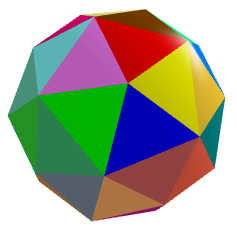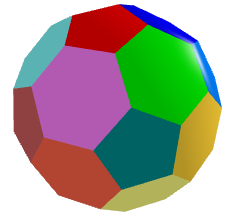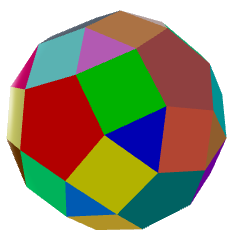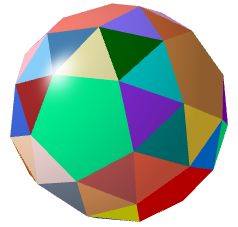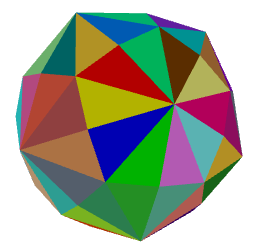- Home
- Golden Math
- Flower of Life
- Sacred Solids
- And much more...
- 3D Models
- 3D Flower of Life
- 3D Platonic Solids
- 3D Archimedean Solids
- 3D Catalan Solids
- 3D Deltoidal Hexecontahedron
- 3D Deltoidal Icositetrahedron
- 3D Disdyakis Dodecahedron
- 3D Disdyakis Triacontahedron
- 3D Pentagonal Hexecontahedron
- 3D Pentagonal Icositetrahedron
- 3D Pentakis Dodecahedron
- 3D Rhombic Dodecahedron
- 3D Rhombic Triacontahedron
- 3D Tetrakis Hexahedron
- 3D Triakis Icosahedron
- 3D Triakis Octahedron
- 3D Triakis Tetrahedron
- 3D Pyramids and Prisms
- 3D Stellations
- Phi in ...
- Sacred Solids in ...
- Music and Geometry
- About
- 3D Models
- Sacred Geometry and Energy
Three-dimensional Constructive Coefficient
The three-dimensional constructive coefficient is a general quantity that can be computed for any polyhedron. Adrià Garcia defines it as the sum of the number of faces times the number of edges per face (which represents the constructive geometry of the polygon) over the fixed numer 12. This normalization is possible because the coefficient, at least in the Platonic, Catalan and Archimedean solids, always happens to be a multiple of 12. The three-dimensional constructive coefficient is the same for a solid and its dual. Therefore, it provides a means to know which solids can be dual of each other. The following table summarizes this coefficient for all the Sacred Solids presented in this site:
|
SOLID |
THREE-DIMENSIONAL CONSTRUCTIVE COEFFICIENT |
DUAL |
|---|---|---|
|
TETRAHEDRON
|
1 ← 3.4/12 → |
TETRAHEDRON
|
|
OCTAHEDRON
|
2 ← 3·8/12 4·6/12 → |
CUBE
|
|
TRIAKIS TETRAHEDRON
|
3 ← 12·3/12 (4·3+4·6)/12 → |
TRUNCATED TETRAHEDRON
|
|
RHOMBIC DODECAHEDRON
|
4 ← 12·4/12 (8·3+6·4)/12 → |
CUBOCTAHEDRON
|
|
DODECAHEDRON
|
5 ← 12·5/12 3·20/12 → |
ICOSAHEDRON
|
|
TRIAKIS OCTAHEDRON
|
6 ← 24·3/12 (8·3+6·8)/12 → |
TRUNCATED CUBE
|
|
TETRAKIS HEXAHEDRON
|
6 ← 24·3/12 (8·6+6·4)/12 → |
TRUNCATED OCTAHEDRON
|
|
DELTOIDAL ICOSITETRAHEDRON
|
8 ← 24·4/12 (8·3+18·4)/12 → |
RHOMBICUBOCTAHEDRON
|
|
RHOMBIC TRIACONTAHEDRON
|
10 ← 30·4/12 (20·3+12·5)/12 → |
ICOSIDODECAHEDRON
|
|
PENTAGONAL ICOSITETRAHEDRON
|
10 ← 24·5/12 (32·3+6·4)/12 →
|
SNUB CUBE
|
|
DISDYAKIS DODECAHEDRON
|
12 ← 48·3/12 (8·6+12·4+6·8)/12 → |
TRUNCATED CUBOCTAHEDRON
|
|
TRIAKIS ICOSAHEDRON
|
15 ← 60·3/12 (20·3+12·10)/12 → |
TRUNCATED DODECAHEDRON
|
|
PENTAKIS DODECAHEDRON
|
15 ← 60·3/12 (12·5+20·6)/12 → |
TRUNCATED ICOSAHEDRON
|
|
DELTOIDAL HEXECONTAHEDRON
|
20 ← 60·4/12 (20·3+30·4+12·5)/12 → |
RHOMBICOSIDODECAHEDRON
|
|
PENTAGONAL HEXECONTAHEDRON
|
25 ← 60·5/12 (80·3+12·5)/12 → |
SNUB DODECAHEDRON
|
|
DISDYAKIS TRIACONTAHEDRON
|
30 ← 120·3/12 (30·4+20·6+12·10)/12 → |
TRUNCATED ICOSIDODECAHEDRON
|

